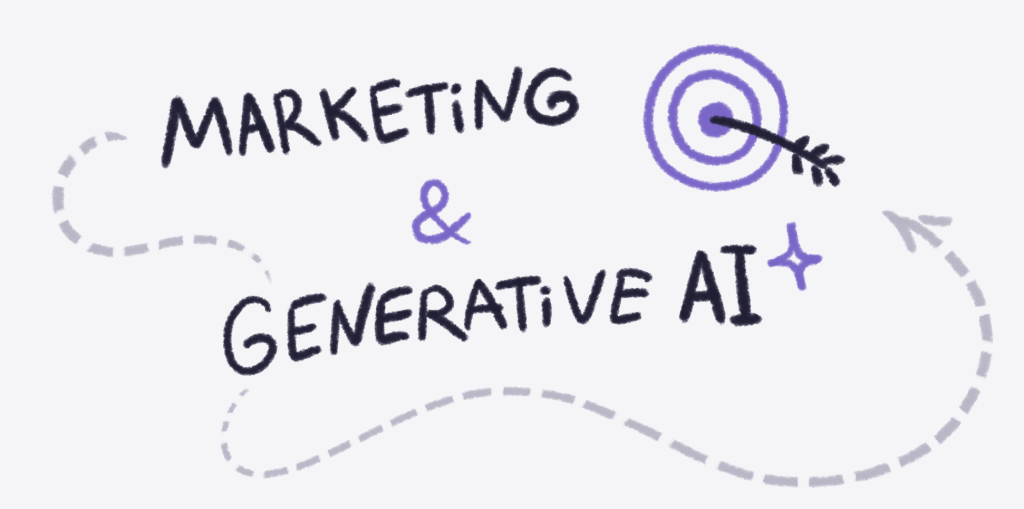Source: Infohubdigital.com
Google has given us a glimpse into the future of search with Google Search Generative Experience (SGE).
-
- And now, with its new AI Overview, Google is providing immediate, chat-based responses that improve the speed, intelligence, and interactivity of our searches.
-
- Together, they’re forever changing the way we search for information.
Engaging with AI Chat through AIO
Launched in May 2023, AIO represents a significant leap forward in search technology. It enables users to interact with search results in a more natural, conversational manner, providing detailed and contextually relevant information. AI Chat is, of course, available everywhere.
What is SGE?
Google Search Generative Experience (SGE) is the upgraded search landscape. SERP results are different with SGE because it uses generative AI that will provide users with quick summaries of their search queries. These SERP responses can be multimodal. They also can become conversational AI. Think of this as a dialogue where users can make queries, clarify answers and receive complex responses.
What is AIO?
Source: Streaming Learning Center
AIO, sometimes known as Google SGE, is a feature of Google Search that has been augmented by AI
AIO’s goal is to promote user engagement by offering search results that are contextually relevant and conversational. AIO, together with SGE, helps make us better content strategists.
SGE seeks to give users a more natural way to examine information by presenting summaries, insights, and related follow-up queries right on the Search Engine Results Page (SERP). SGE offers consumers more in-depth information without requiring them to leave the SERP, marking a substantial change in Google’s search capabilities.
Evolution of Google’s SGE and AIO
In 2023, Google announced the launch of the Search Generative Experience (SGE), an innovative initiative originating from Google Search Labs.
The main goal was to improve fact-finding search through generative AI, which is intended to provide an interactive and more intuitive searching experience. Google’s vision was to seamlessly integrate SGE with AIO, a feature designed to provide users with conversational AI answers and comprehensive topic previews.
Source: Techxplore.com
The idea was that this integration would push search technology to a new level, providing users with a richer, more personalized search experience. Despite these ambitious goals,
Google has encountered challenges with AIO. Remember that it was launched in May of 2024. As of June 1, 2024, Google has reduced the use of AIO for certain searches to minimize errors and improve accuracy. This demonstrates the company’s dedication to refining its AI technologies for optimal performance.
Not sure what an AIO looks like?
AIOs appear at the top of your search page, as per the screenshot above. They will be labeled “AI Overview”. Remember that AIOs well may be multimodal, so they may include images, videos and audio files.
The top summaries in AIO benefit users by offering quick and accurate overviews of topics at a glance. They fall within Google’s criteria for improving the search experience.
Read about Notion AI: Learn How This AI Writing Tool Also Manages Strategy
Case study: Creating a better–more informed–content strategy
Meet Sarah, a content strategist at a tech startup who is feeling overwhelmed by trying to be the perfect content strategist. Thanks to Google’s SGE, Sarah uses generative AI examples and a content strategy that has never been available to her before—at least not like this.
She’s learning about her potential clients, their likes and a whole of what they don’t like, which helps her customize her content. She’s generating charts and graphs that make it easy to share data with her manager and her team so they can make decisions about how to spend their marketing dollars.
A generative AI example might be ChatGPT—it’s a tool that lets users enter prompts to receive humanlike images, text or videos that are created by AI. ChatGPT’s DALL-e is a good generative AI example. Set up your specs, and DALL-e comes up with a picture. Keep refining those specs until you arrive at the picture that you want.
Sarah’s learning how to use generative AI
A generative AI example might be ChatGPT—it’s a tool that lets users enter prompts to receive humanlike images, text or videos that are created by AI. ChatGPT’s DALL-e is a good generative AI example. Set up your specs, and DALL-e comes up with a picture. Keep refining until you arrive at the picture that you want.
Identifying gaps, trends and patterns
Sarah has learned to manipulate her data so she’s generating year/year and month/month reporting, enabling her and her team to identify trends, patterns, and gaps in their existing content strategies. Thanks to this data, they can compare their strategy with that of their competitors.
-
- Based on data, they may opt to cut back on their PPC ads and spend more on SEO. They’re planning to commit more money on creating short video clips to use across their social media accounts. In many cases, the data may have been there before, but it is now much more accessible.
-
- Best of all, Sarah has learned that there is a wide range of factors that influence consumer activity—economics, weather, seasons, etc. She knows that, as a content strategist, she needs to continue to monitor and refine customer activity.
-
- Both SGE and AIO are powerful tools that can enhance your strategy, but human creativity and understanding of your target audience are equally important. This is where it all starts. SGE delivers conversational responses and thorough summaries using information sourced from the internet.
Despite recent obstacles with AIO, Google search labs is dedicated to improving its AI technologies, ensuring even greater advantages for a content strategist like Sarah.
Benefits of Google’s SGE and AIO: Examples of AI Overviews
Source: Wordstream.com
-
- Comprehensive search results: What is SGE? Google’s SGE and AIO go beyond simply providing links, they offer users concise summaries and previews of topics right at the top of search results. This feature helps users save time and effort by quickly accessing the information they need. That information is multimodal—images, video or audio files.
-
- Personalized experience: By utilizing generative AI, Google’s SGE and AIO have the capability to tailor search outcomes to match each user’s personal preferences and search histories. This results in the delivery of more pertinent and personalized information.
-
- Enhanced content strategy: Both SGE and AIO offer valuable insights and examples for content creators and strategist. These resources help users develop a content strategy template that can streamline production.
-
- Improved user engagement: The integration of conversational AI in SGE and AIO enhances search results by making them more engaging and interactive, thus increasing user engagement with search content.
-
- Efficient information retrieval: SGE and AIO simplify the search process by offering fast, detailed summaries of subjects, thereby enhancing the ease with which users can access the information they are looking for.
-
- Future potential: Despite facing recent challenges, Google Search Labs remains dedicated to enhancing its AI technologies. This commitment suggests that future advancements in search capabilities are on the horizon, offering even greater benefits for strategists.
Challenges faced by SGE
Google’s SGE initiative aims to incorporate generative AI into its search engine, but it’s encountering various challenges.
-
- Accuracy and reliability: It is a significant challenge to guarantee that the produced content is precise and dependable. The inevitable, inaccurate AI-generated content erodes user confidence.
-
- Bias and fairness: AI models have the potential to adopt biases that exist in the data used to train them. It is a challenging task to rectify these biases and guarantee fair and impartial outcomes.
-
- Privacy concerns: Creating customized search results frequently involves gathering large amounts of data, leading to potential privacy worries for users. Striking a balance between personalized content and user privacy remains a challenge.
-
- Scalability and performance: Integrating a large-scale generative AI system into Google Search demands substantial computational resources. Ensuring that the system can maintain high performance while handling large numbers of queries is really not there yet.
-
- Technical integration: Integrating generative AI into the current search infrastructure while maintaining compatibility with different devices and platforms can present technical complexities.
Conclusion
Google’s SGE is a major step forward in search technology. It utilizes conversational AI to deliver an intuitive, engaging, and efficient search experience. Since its launch in May 2023, SGE change the way we interact with search engines by providing personalized and contextually relevant answers that surpass traditional search results.
Although we’re now taking a step back and regrouping, know that this is not a retreat. There’s a learning curve. I’m thinking of the lines around the block waiting for the release of the latest new iPhone—that are always full of bugs! SGE/AIO presents an opportunity for Google to gain insights, tackle issues, and return with greater strength.
We anticipate that Google Search Labs will continue to invest in and enhance SGE and AIO. They’ll be looking to us to integrate feedback to make these search tools even more powerful and robust.
Frequently Asked Questions
What is Google Search Generative Experience (SGE)?
Google SGE (Search Generative Experience) is an advanced search feature that uses generative AI to provide users with conversational and contextually rich answers. It aims to enhance the traditional search experience by offering detailed, relevant information instantly.
How does SGE work?
SGE uses machine learning and natural language processing to understand the queries and produce responses Machine learning gathers information from across the internet to provide accurate and concise results.
What are the benefits of using SGE?
SGE provides personalized search results, immediate access to information, and an interactive, conversational search experience.
Has Google’s SGE faced any challenges?
Yes, Google has faced challenges with AIO. As of June 1, 2024, Google has reduced the use of AIO for certain searches to minimize errors and improve accuracy.
How does Google plan to improve SGE and AIO?
Google is dedicated to improving SGE/AIO both of these machine-learning technologies by integrating user feedback and constantly advancing its AI technologies. Google owns the search space, and now SGE with AIO are continuing to raise the bar.
Can I use SGE for all types of searches?
While SGE aims to cover a wide range of topics, it is still being refined and may not be available for all types of searches. Coverage will expand as the technology improves.


